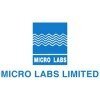Filter interviews by
Virchow Biotech Interview Questions and Answers
7 Interview questions
SDS-PAGE is a technique for separating proteins based on their size using a polyacrylamide gel and sodium dodecyl sulfate.
Separation by Size: SDS-PAGE separates proteins primarily based on their molecular weight, allowing researchers to analyze protein purity and size.
Denaturation: SDS (sodium dodecyl sulfate) denatures proteins, giving them a negative charge proportional to their length, ensuring uniform migratio...
The calculation formula for FCM in air velocity is FCM = 0.075 x V^2
FCM stands for face velocity calibration factor
V is the air velocity in feet per minute (fpm)
The formula is FCM = 0.075 x V^2
HEPA filters typically have a pore size of 0.3 microns.
HEPA filters are designed to capture particles as small as 0.3 microns in size
The pore size of a HEPA filter is crucial for its efficiency in trapping particles
HEPA filters are commonly used in cleanrooms, hospitals, and HVAC systems
Molarity is the concentration of a solution expressed as the number of moles of solute per liter of solution. Normality is the concentration of a solution expressed as the number of equivalents of solute per liter of solution.
Molarity is a measure of the number of moles of solute per liter of solution.
It is represented by the symbol 'M'.
For example, a 1 M solution of sodium chloride contains one mole of sodium chl...
Molarity is a measure of the concentration of a solute in a solution.
Molarity is defined as the number of moles of solute per liter of solution.
It is expressed in units of mol/L or M.
Molarity can be calculated using the formula: Molarity (M) = moles of solute / liters of solution.
For example, a solution containing 0.5 moles of NaCl in 1 liter of water has a molarity of 0.5 M.
Molarity and molality are two different ways of expressing the concentration of a solution.
Molarity is the number of moles of solute per liter of solution.
Molality is the number of moles of solute per kilogram of solvent.
Molarity changes with temperature, while molality does not.
For example, a 1 M solution of NaCl contains 1 mole of NaCl per liter of solution, while a 1 molal solution of NaCl contains 1 mole of Na...
Limits for NVPC at rest and in operation refer to the non-viable particle count in a cleanroom environment.
NVPC limits are typically specified in particles per cubic meter (e.g. 3520 particles/m3 at rest, 35200 particles/m3 in operation)
These limits are important for maintaining cleanliness and quality in pharmaceutical or semiconductor manufacturing facilities
Regular monitoring and testing of NVPC levels is neces...
Virchow Biotech Interview Experiences
19 interviews found
I applied via Company Website and was interviewed in Aug 2022. There were 3 interview rounds.

(4 Questions)
- Q1. Technical questions on process
- Q2. Basic questions was asked.
- Q3. Your area of project ?
- Q4. Work experience in any field.?
(3 Questions)
- Q1. Your expectations and your experience
- Q2. Clarification about the salary.
- Q3. How soon your are able to join and your interest area.
Interview Preparation Tips
I applied via Walk-in and was interviewed in Oct 2024. There was 1 interview round.
(5 Questions)
- Q1. Self intraduction
- Q2. Work experience
- Q3. Technical interview
- Q4. Hr round interview
- Q5. Final round with hod's.
Interview Preparation Tips
(2 Questions)
- Q1. What are api formulation
- Q2. What is capsule size
Interview Preparation Tips
(2 Questions)
- Q1. Tell about yourself
- Q2. Responsiblilies and execution
Interview Preparation Tips
I appeared for an interview before May 2024, where I was asked the following questions.
- Q1. Describe ALCOA & ALCOA+ & it's importance
- Q2. Describe CAPA & it's main purpose
I applied via Walk-in and was interviewed in Dec 2022. There were 3 interview rounds.

(3 Questions)
- Q1. What is pore size of HEPA filter
- Ans.
HEPA filters typically have a pore size of 0.3 microns.
HEPA filters are designed to capture particles as small as 0.3 microns in size
The pore size of a HEPA filter is crucial for its efficiency in trapping particles
HEPA filters are commonly used in cleanrooms, hospitals, and HVAC systems
- Q2. Limits for NVPC atrest and inoperation
- Ans.
Limits for NVPC at rest and in operation refer to the non-viable particle count in a cleanroom environment.
NVPC limits are typically specified in particles per cubic meter (e.g. 3520 particles/m3 at rest, 35200 particles/m3 in operation)
These limits are important for maintaining cleanliness and quality in pharmaceutical or semiconductor manufacturing facilities
Regular monitoring and testing of NVPC levels is necessary ...
- Q3. What is calculation formula for FCM in Air velocity
- Ans.
The calculation formula for FCM in air velocity is FCM = 0.075 x V^2
FCM stands for face velocity calibration factor
V is the air velocity in feet per minute (fpm)
The formula is FCM = 0.075 x V^2
(2 Questions)
- Q1. Why you choose this company
- Ans.
I chose this company for its strong reputation in the industry and commitment to innovation.
Strong reputation in the industry
Commitment to innovation
Positive company culture
Opportunities for growth and development
- Q2. What you know about this company
Interview Preparation Tips
I appeared for an interview before May 2024, where I was asked the following questions.
- Q1. What is High-Performance Liquid Chromatography (HPLC)?
- Q2. What is SDS-PAGE and how is it used in biological research?
- Ans.
SDS-PAGE is a technique for separating proteins based on their size using a polyacrylamide gel and sodium dodecyl sulfate.
Separation by Size: SDS-PAGE separates proteins primarily based on their molecular weight, allowing researchers to analyze protein purity and size.
Denaturation: SDS (sodium dodecyl sulfate) denatures proteins, giving them a negative charge proportional to their length, ensuring uniform migration in ...
I appeared for an interview before Apr 2024, where I was asked the following questions.
- Q1. Ask about NVPC
- Q2. Filling trouble shooting
I appeared for an interview before Jan 2024.
(5 Questions)
- Q1. How many years experience.
- Ans.
I have 10 years of experience in project management.
10 years of experience in project management
Managed various projects from initiation to completion
Led cross-functional teams to achieve project goals
- Q2. Tell about her self. And ctc, expected ctc.
- Ans.
I am a highly motivated and experienced professional with a strong background in project management. Currently earning a salary of $80,000 with an expected increase to $90,000.
Experienced professional with strong project management skills
Currently earning $80,000 with expected increase to $90,000
Motivated and dedicated to achieving goals
- Q3. What is your qualification
- Ans.
I hold a Master's degree in Business Administration.
Master's degree in Business Administration
Specialized in Marketing
Graduated with honors
- Q4. How many members family
- Ans.
I have a family of four members.
I have two parents and one sibling.
We live together in the same household.
We often spend time together as a family.
Our family consists of two adults and two children.
- Q5. Where did you stay.
- Ans.
I stayed at a cozy bed and breakfast in the countryside.
Stayed at a bed and breakfast
Located in the countryside
Cozy atmosphere
I appeared for an interview before Mar 2024, where I was asked the following questions.
- Q1. Self introduction
- Q2. Biotechnology instrumentions
(2 Questions)
- Q1. What is a vaccine and it's type?
- Q2. Molarity and Molality of NaCl
- Ans.
Molarity and molality are two different ways of expressing the concentration of a solution.
Molarity is the number of moles of solute per liter of solution.
Molality is the number of moles of solute per kilogram of solvent.
Molarity changes with temperature, while molality does not.
For example, a 1 M solution of NaCl contains 1 mole of NaCl per liter of solution, while a 1 molal solution of NaCl contains 1 mole of NaCl pe...
(2 Questions)
- Q1. Are you comfortable to work in the position?
- Q2. Tell about yourself?
Interview Preparation Tips
Skills evaluated in this interview
Top trending discussions






Virchow Biotech Interview FAQs
The duration of Virchow Biotech interview process can vary, but typically it takes about less than 2 weeks to complete.
Tell us how to improve this page.
Virchow Biotech Interviews By Designations
- Virchow Biotech Research Associate Interview Questions
- Virchow Biotech Executive Production Interview Questions
- Virchow Biotech Senior Operator Interview Questions
- Virchow Biotech Project Engineer Interview Questions
- Virchow Biotech Executive Trainee Interview Questions
- Virchow Biotech Team Manager Interview Questions
- Virchow Biotech QA QC Engineer Interview Questions
- Virchow Biotech Senior Executive Interview Questions
- Show more
Interview Questions for Popular Designations
Overall Interview Experience Rating
based on 23 interview experiences
Difficulty level
Duration
Interview Questions from Similar Companies
Virchow Biotech Reviews and Ratings
based on 362 reviews
Rating in categories
|
Executive
268
salaries
| ₹1.9 L/yr - ₹5.7 L/yr |
|
Research Associate
141
salaries
| ₹1.6 L/yr - ₹4.2 L/yr |
|
Senior Executive
131
salaries
| ₹2.7 L/yr - ₹8.9 L/yr |
|
Assistant Manager
83
salaries
| ₹4.2 L/yr - ₹9.5 L/yr |
|
Operator
47
salaries
| ₹1.2 L/yr - ₹4.2 L/yr |

Hetero

Micro Labs

Biological E

USV
- Home >
- Interviews >
- Virchow Biotech Interview Questions













